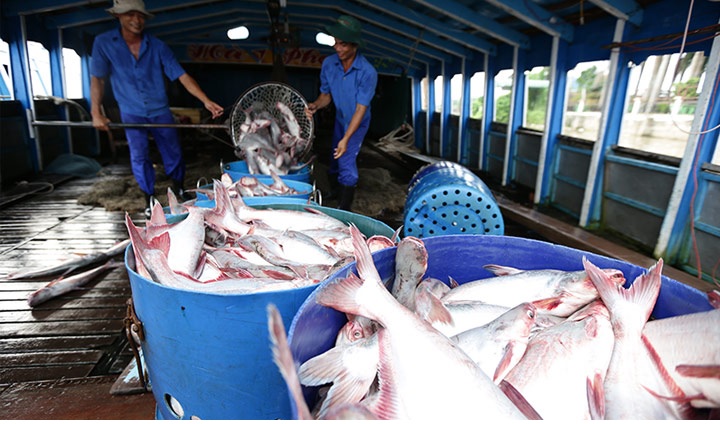(vasep.com.vn) In the first two months of 2023, China imported over 561 thousand tons of seafood, worth nearly 2.7 billion USD, down 3% over the same period last year. Of which, fresh/live/chilled seafood reached nearly 48 thousand tons, worth USD 887 million, accounting for 33% of the total value of seafood imports to this country.
China's seafood imports in January 2023 decreased by 19% over the same period because of the Lunar New Year holiday. In February, the complete opening of the market after the Covid pandemic has helped import activities to be more active.
In February, China imported 307 thousand tons of seafood, worth 1.34 billion USD, up 32% in volume and 20% in value over the same period last year. Of which, fresh/live/chilled seafood products reached over 22,000 tons, worth US$405 million, up 19% and 9% respectively over the same period last year.

The main seafood imported as fresh/live/chilled products are: lobster, crab, salmon, black tiger shrimp, large white shrimp, eel, and abalone
The main seafood imported as fresh/live/chilled products are: lobster, crab, salmon, black tiger shrimp, large white shrimp, eel and abalone. These products are often used in restaurant, hotel, tourism segments and consumption of high-income families in China. The demand for fresh/live seafood often increases during holidays, Tet, tourist seasons, etc.
In the first two months of this year, Vietnam's seafood exports to China reached $127 million, down 12% over the same period last year, mainly due to a sharp decline in January. In February, Vietnam's seafood exports to China reached over USD 102 million, up 24% compared to February 2022.
The popular Vietnamese products exported to China in the past 2 months include: frozen pangasius fillets, accounting for 41%, fresh/chilled pangasius (whole) accounting for 16%, dried fish (except pangasius, tuna, etc) accounted for 16%, live/fresh/chilled whiteleg shrimp accounted for 7%, live/fresh/chilled black tiger shrimp accounted for 6%, dried squid accounted for 6%. Exports of lobster to China decreased by 91%, only contributing for 1% of total seafood exports to China.

Pangasius is one of popular Vietnamese products exported to China
Vietnam is currently the 7th largest seafood supplier for the Chinese market. Top 6 largest suppliers include: Ecuador, Russia, Canada, USA, India and Norway.
In terms of volume, Russia is exporting the most seafood to China (accounting for 23%) but in terms of value, Ecuador is leading with 19%.
Ecuador's shrimp exports to China in the first two months of this year reached over 95 thousand tons, worth 500 million USD. The volume increased by 18% over the same period, but the value decreased by 3%.
After Covid, China is gradually normalizing production, business and trade activities. China has set a target of 5% economic growth in 2023 with a strategy of further opening up to the world economy. The positive changes of the Chinese market are optimistic signals about the economic and consumption demand in this market.
Vietnamese seafood enterprises look forward to the recovery of the Chinese market. It is forecasted that seafood exports to China will increase gradually in the coming months, for all product segments, and pangasius and fresh seafood species will still be in high demand.
Compiled by Thuy Linh